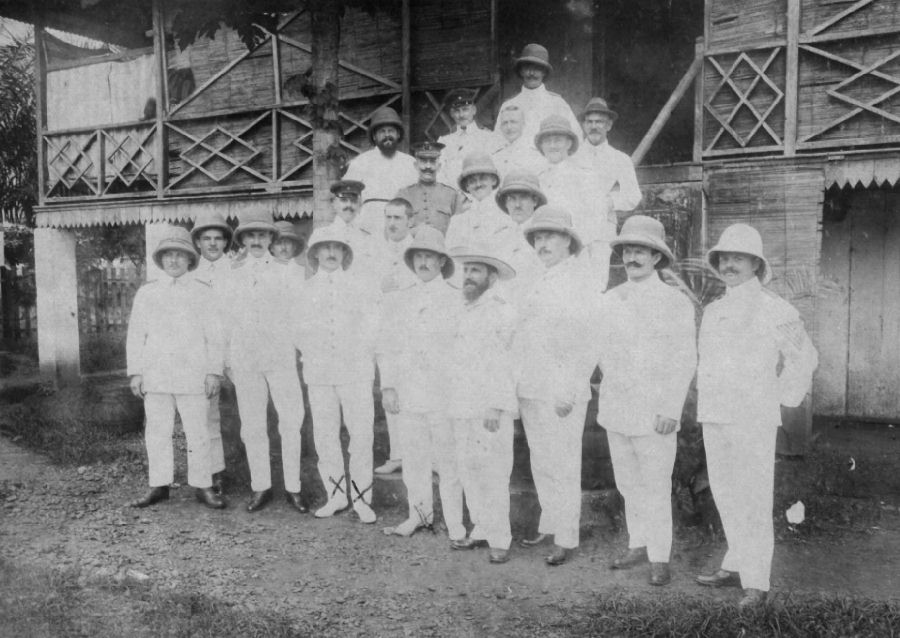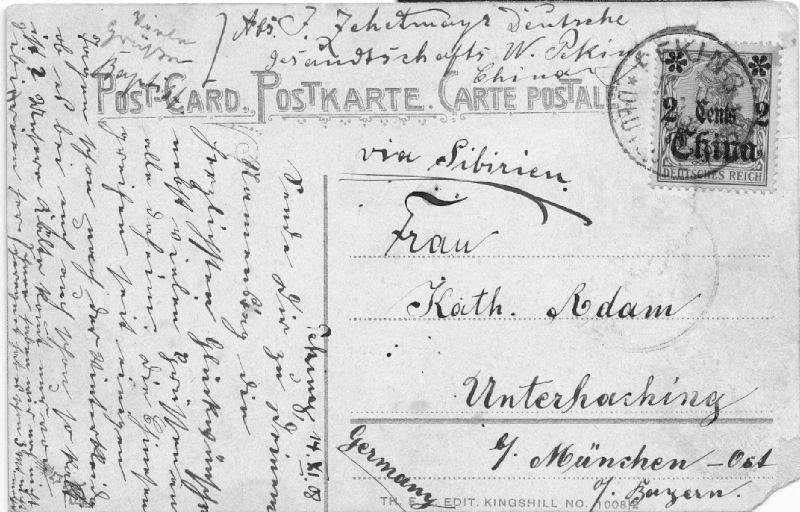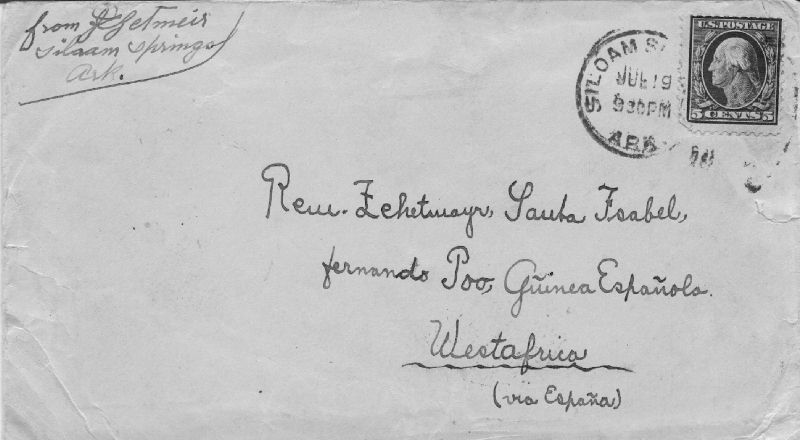|
The two photographs on this page show
Johann-Baptist Zehetmayr. They were sent to us by Karl Zetmeir who
was doing some family history research and came across his
great-grandfather's nephew. The photograph above shows Zehetmayr in
1909 as an Unteroffizier in the
East Asian Artillery Battery. The photograph at the bottom of the
page shows him along with other officers and NCOs of the Cameroon
Schutztruppe in about 1915.
From
Johann-Baptist's service record
along with several letters and documents belonging to him it has
been possible to piece together much of his life history.
He was born in Unterhaching, Bavaria on 30th September 1883. His
father had served as a cook in the Bavarian army during the
Franco-Prussian War. Johann-Baptist himself joined the Bavarian army
on 24th October 1903, probably in an artillery regiment.
In 1907 he volunteered for service in China where he served in the
field artillery battery of the East Asian Detachment. He was
promoted to Unteroffizier on 3rd April 1909 just as the Detachment
was being disbanded two days later. He returned to Germany, arriving
at Cuxhaven on board the postal steamer "Prinz-Regent Luitpold".
It believed that he continued service in the 6th Battery of the 1st
Bavarian Foot Artillery Regiment ("Kgl.
Bayer. 1. Fußartillerie-Regt.
vakant Bothmer") until volunteering again for overseas service.
This time he was given a two year posting
as a Polizeimeister of the Cameroon Polizeitruppe on 2nd April 1914.
When the First World War broke out a few months later he was
transferred along with most of the Polizeitruppe to the
Schutztruppe, probably serving in the 4. Feldkompagnie (originally
the Expeditionary/Survey company based at Soppo). In a postcard he
mentions a
twelve day march from Duala to Ossidinge (modern
Mamfe)
so it is clear
that he served in the Western part of the colony.
In 1915 he was promoted to Feldwebel
(although his post war documents have him listed as a Vizefeldwebel
so this promotion may have been a temporary wartime appointment).
Along with most of the remaining Cameroon Schutztruppe, rather then
surrender to the enemy he retreated into the neutral Spanish colony
of Rio Muni and spent at least some of the war on the Spanish island
of Fernando Po. He may have then been transferred to Spain along
with many of his German comrades.
Johann-Baptist was an avid photographer and had an entire album of
photographs of his time in Cameroon. Unfortunately the whereabouts
of most of these photographs is now unknown. Those that remain are
shown here.
After the war he returned to
Africa, though he did consider moving to the United States at one
point. He
died of Blackwater Fever in Bata, Equatorial Guinea on 7th April
1932.
For his wartime service he was awarded the
Prussian Iron Cross, second class (as of 15th March 1919), the
Bavarian Military Merit Cross, second class with swords (as of 23rd
October 1920) and the Colonial Service Medal (as of 22nd March
1922).

Officers and NCOs of the Cameroon Schutztruppe c1915-16
This photograph shows Johann-Baptist Zehetmayr (marked with
XX) and other members of the Cameroon Schutztruppe after their
internment in the Spanish colony of Rio Muni. The officer in a
khaki uniform in the centre is a Spanish colonial officer. The
Schutztruppe personnel all wear the 1896 white tropical uniform.
NCO chevrons can be seen on at least two of the men (the man in
the centre with a Südwester hat has the single chevron of an
Unteroffizier and the one on the far right has the four chevrons
of a Feldwebel). Most of the Schutztruppe have khaki tropical
helmets. Zehetmayr and the Feldwebel on the far right appear to
have white tropical helmets, presumably because they are
originally from the Polizeitruppe. Two soldiers have the grey
field cap with red hatband and piping for Cameroon. One has a
simple trilby hat. It may be that he is a civilian official. As
mentioned before the Unteroffizier in the centre wears a grey
felt Südwester hat with edging in red for Cameroon. Zehetmayr
and the man next to him wear short white boots to match their
uniforms while most of the others wear Schutztruppe black
leather short boots.
Photo
© Karl Zetmeir

A Postcard Sent by Johann-Baptist Zehetmayr to his Home from
Peking, China in 1908

A Letter Sent to Johann-Baptist Zehetmayr from America while
he was in Internment in Spanish Fernando Po
Please respect
Karl Zetmeir's generosity in sharing these photographs with us
by not re-using them without permission.
|